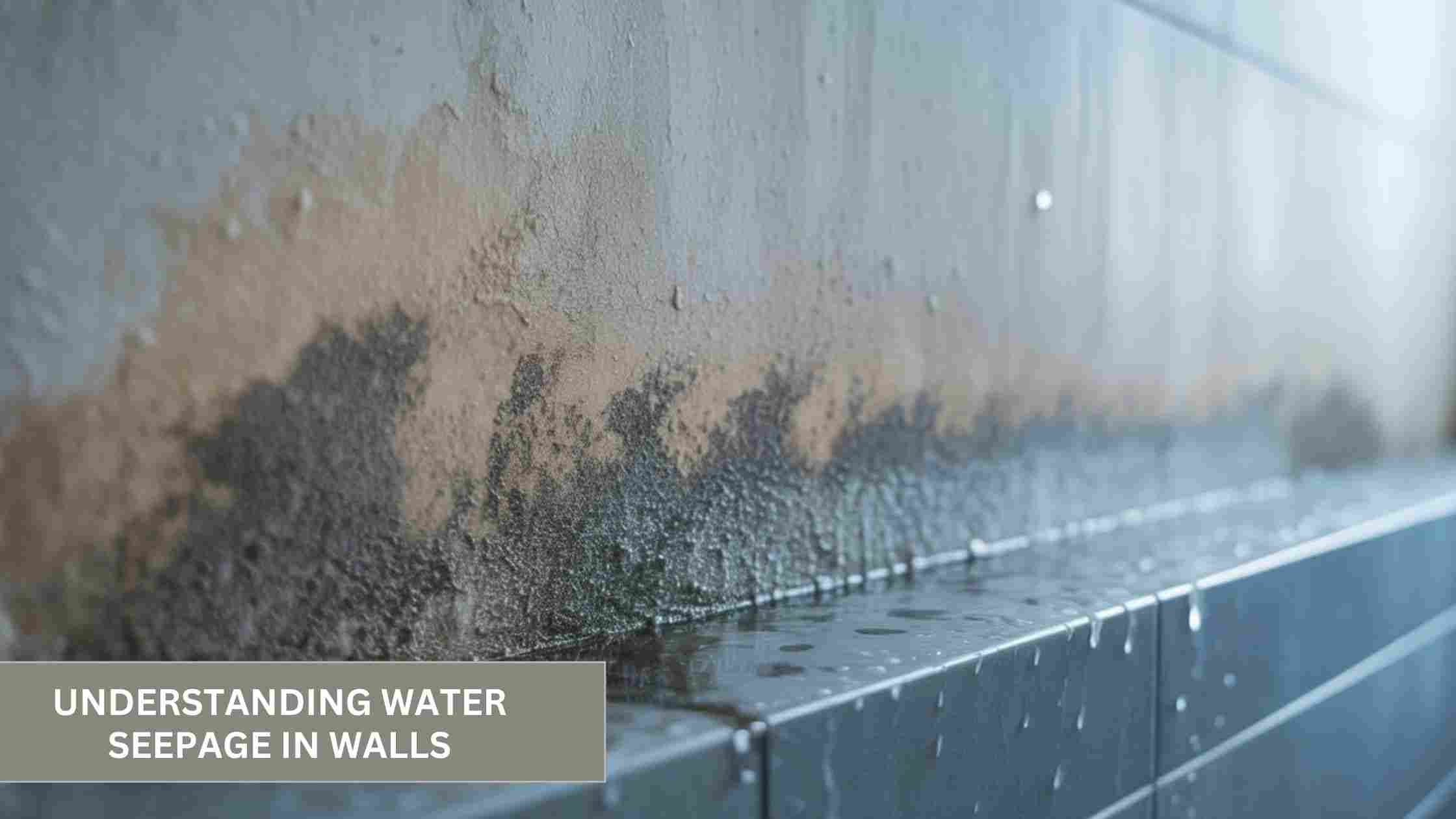Understanding Water Seepage in Walls: Causes, Prevention & Solutions

Water seepage in walls is one of the most common yet underestimated issues in Indian homes. It often starts small—barely visible—but over time, it can lead to stains, structural damage, and costly repairs. From damp patches to peeling paint, the signs may appear late, but the impact runs deep.
Tiles are often the first shield against this damage. However, without proper sealing and installation, even the best waterproof tile can lose its effectiveness. At Simpolo Tiles and Bathware, we’ve seen how timely prevention makes all the difference. In this blog, we explore the causes, effects, and smart ways to prevent seepage.
What is Water Seepage in Walls?
Water seepage refers to the slow and gradual infiltration of moisture through tiny openings, cracks, or porous surfaces in your walls. It might come from rain, underground moisture, or internal plumbing leaks. Once water enters, it spreads inside the wall, damaging the material from within.
When this happens, you will notice damp patches, bubbling paint, or white powdery deposits called efflorescence. Over time, it affects the wall’s strength, structure, and design. If your wall tiles are exposed to moisture , it can loosen the adhesive or stain the surface very soon. That’s why even the best tiled surfaces need proper waterproofing.
Common Causes of Water Seepage in Walls
The most apparent reason for water seepage in walls is the presence of cracks. Even hairline cracks act as a direct pathway for moisture. Over time, small cracks widen, allowing more water to seep in. Apart from that, some other causes can be:
- Improper waterproofing is another major culprit behind seepage. Many homes skip good-quality waterproof layers during construction. Without this barrier, water from rain or underground moisture slowly creeps in.
- Plumbing leaks hidden inside walls can also trigger seepage. A small dripping joint can damage walls for months before you even notice it.
- Apart from these, condensation can be another reason. Bathrooms and kitchens often remain humid, and without proper ventilation, this moisture can settle on walls.
- Finally, heavy rainfall or flooding causes sudden water accumulation near the foundation, forcing moisture through the walls.
In every case, the result leads to dampness and damage to the walls.
Related Post: Best Colour Combinations with Yellow Walls for Home Decor
How Water Seepage Affects Tiles and Walls?

When seepage remains unchecked, it begins to weaken the bond between the tiles and the wall. The adhesive behind the tile absorbs moisture, softens, and eventually loses grip. You may notice hollow sounds when you tap the tiles or, worse, tiles falling off over time.
Besides, moisture also causes grout to discolour and crack. Once that happens, more water seeps through the gaps, accelerating the damage. Even high-quality waterproof tile surfaces can look stained or lose their shine when dampness spreads underneath.
Long-term seepage also harms the wall itself. Due to the prolonged exposure to water, the plaster peels, the paint bubbles, and the wall surface becomes flaky. Eventually, it affects the internal structure of the wall, leading to costly future repairs.
At Simpolo Tiles and Bathware, we always suggest a combination of good tile selection, proper installation, and preventive measures to avoid this situation altogether.
Prevention Techniques for Water Seepage in Walls
The first step in preventing seepage is to waterproof the walls properly. Before tiling any surface — such as bathroom walls, kitchen backsplashes, or balcony tiles , apply a strong waterproof layer. It acts as a shield, blocking moisture from entering the structure.
Sealing cracks and gaps is equally important. Even small openings allow water to creep in. So, regular but careful inspections help catch these early. Moreover, fixing plumbing leaks also prevents hidden seepage. A simple pipe replacement at an early stage can save you from expensive wall repairs later.
On the other hand, ventilation can also protect your walls and living room tiles from excessive moisture exposure. Humid areas, such as bathrooms, require good airflow to prevent moisture from accumulating on walls. You can add exhaust fans or open windows, which helps a lot.
And lastly, improve drainage around your home. When rainwater collects near walls, it increases pressure and pushes moisture inside. Simple steps like sloping the ground away from the building or cleaning clogged drains can make a huge difference.
At Simpolo Tiles and Bathware, we always recommend combining these preventive steps with the right tile choice. Some of our collections, like the Dacite Ash or Ice Onyx, are designed with moisture-resistant and anti-slippery properties. They not only look good but also add an extra layer of protection.
Related Post: 15 Tips to Select the Best Tiles for Living Room
The Role of Tile Installation in Preventing Water Seepage
- Proper tile installation creates a tight seal that blocks moisture. That means using the right adhesives, levelling the surface correctly, and sealing grout joints after the tiles are set.
- Waterproof membranes behind bathroom tiles and kitchen tiles are crucial. These membranes act as an invisible barrier.
- Quality adhesives that resist moisture are just as important. On the other hand, unsealed grout lines are one of the most common entry points for water.
Our collections at Simpolo Tiles and Bathware include advanced waterproof tile solutions that reduce water absorption. Paired with correct installation, they last longer and keep the walls safe.
Conclusion
Water seepage doesn’t just spoil the look of your walls; it also silently damages the entire structure. With proper waterproofing, the right tiles, and correct installation, you can stop the problem before it starts.
At Simpolo Tiles and Bathware, we believe that prevention is better than repair. With the proper waterproofing tile selection and installation from our vast collection, your walls stay safe and beautiful for years. If you are still unsure about the final look, our Digital Showroom and Virtual Space Creator allow you to preview designs in 3D. You can even scan the tiles using our Smart Code Technology to see how they will appear on your walls.
Related Post : Kitchen Backsplash Tile Ideas for a Trendy and Functional Space
FAQs about Water Seepage in Walls
What are the main causes of water seepage in walls?
Cracks, poor waterproofing, hidden plumbing leaks, and heavy rain are common causes. Over time, they allow moisture to penetrate and damage surfaces.
How do I know if my walls are affected?
Look for damp patches, peeling paint, musty odours, or white salt stains. Tapping tiles for hollow sounds can reveal hidden seepage.
Can I fix it myself?
Minor cracks can be patched, but deep or recurring seepage usually requires professional intervention.
How can I prevent water seepage?
Apply waterproofing layers before tiling, seal cracks early, fix plumbing leaks, and ensure good ventilation. Using waterproof tile adds extra protection.
When should I call a professional?
If seepage reappears after repairs or spreads widely, consult an expert for a long-term solution.







